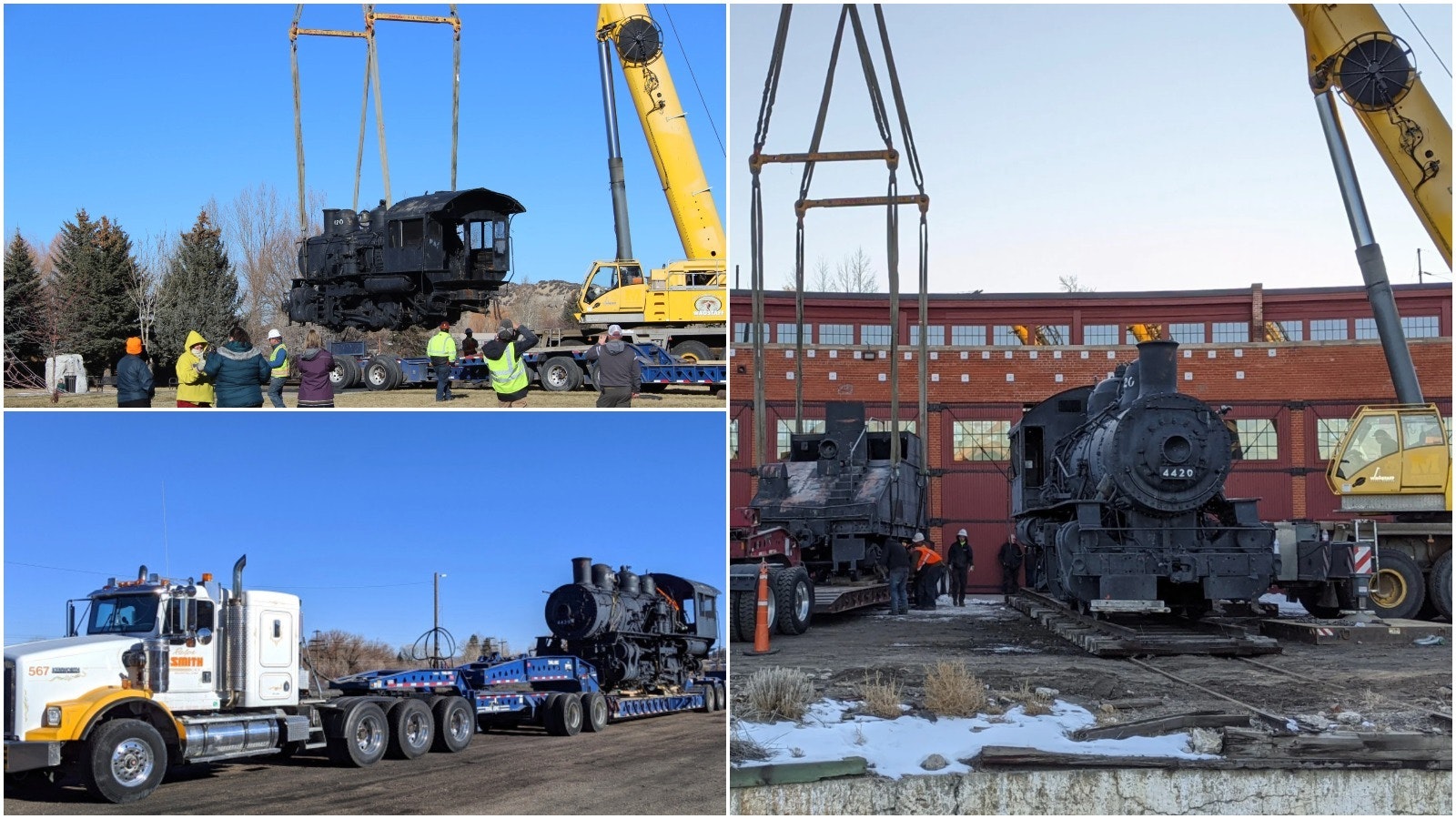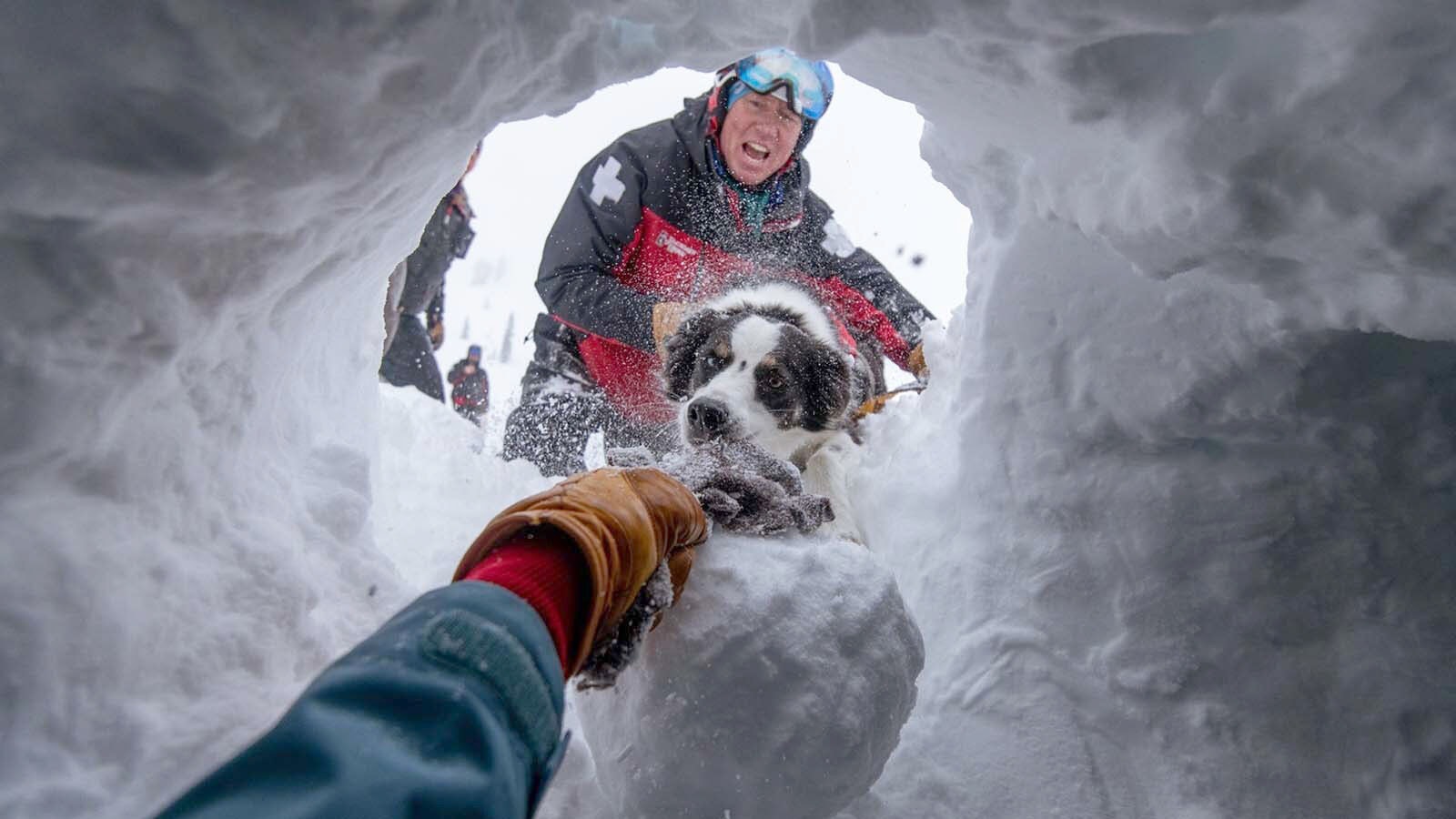By Kayne Pyatt, Uinta County Herald
EVANSTON — At 105 years of age, little Switch Engine 4420, along with her tender, which held the coal and water, has returned to her home at the Evanston Railyards and Roundhouse.
In 1915, during WWI and the presidency of Woodrow Wilson, 4420 was brought by the Union Pacific Railroad to Evanston — a small, 47-year-old community of 3,000 residents.
Over the next 43 years the engine was worked at the railyards, bringing loaded cars to the Roundhouse to be pulled by larger engines to many destinations, and the town grew to be a major railroad community.
Shelly Horne, member of the Evanston Historic Preservation Commission and chair of the sub-committee assigned to the steam engine project, was largely responsible for the success of returning the engine to the Roundhouse. Serving on that committee with Horne were Cindy Wasson, Noni Proffit, John Davis, Jim Davis, Joan Nixon, Wayne Morrow and Rick Eskelson.
“I think this is the greatest first step we’ve (the commission) made to finally get engine 4420 back to the Roundhouse, where we can protect it and the tender,” Horne said. “It’s a wonderful first step.”
In 1958, when the UP retired the engine, it donated her to the City of Evanston, and she was placed on the courthouse lawn. She remained there for 23 years, until 1981, when the engine and tender were moved to Railyard Park, located at 438 Elm St. next to North Elementary school.
For many years, the Evanston Historic Preservation Commission was made up of only three or four people, and it had no money to do the historic projects members wished to complete. Horne said in the last several years they have filled the commission with good, active members and have since begun to work on specific projects, including the current project.
Horne was responsible for contacting and receiving bids from construction and crane companies for the project. He also attended local city council meetings to gain the support of the council in order to move the engine.
Switch Engine 4420 weighs 149,000 pounds — equal to almost 75 tons — and is 20 feet long. The tender behind the engine weighs 44,000 pounds, or 22 tons, and is 26 feet long. In order to move anything of that size, a large crane and special tractor-trailer needed to be found. Horne was able to get a bid of $22,800 for the completion of the move from Wagstaff Crane together with Ralph Smith Co., a trucking business in Woods Cross, Utah. Wagstaff Crane brought a 300-ton crane to successfully pick up both engine and tender.
Wasatch Railroad Contractors (WRC) of Cheyenne was also hired for an additional $2,900 to make sure the riggings on the engine and tender were properly placed. WRC is a company well known for moving trains.
WRC’s Steve Lee and owner John Rimmasch were both in Evanston for the move and assisted with the rigging process. Lee had formerly worked for UP in Cheyenne, where he was in charge of 4,000 steam engines. He’s well known in the field nationwide for his knowledge and expertise of steam engines. In examining the engine, Lee said the boiler was in good shape, though there is some rust damage on both the engine and tender.
On Friday, Dec. 4, the engine and tender were moved and placed outside one of the huge double doors at the Roundhouse; they’ll later be moved inside the Roundhouse, where the restoration will take place.
Horne said the commission hopes to move them inside in the next couple of weeks, as soon as a surveyor advises on what’s needed to install tracks to move it in.
The commission will get a company out of Salt Lake City to lay the rail, and Horne said UP might help as well. Once the engine and tender are inside the Roundhouse, the commission will get an evaluation of the cost and a timeline for restoration, Horne said.
Horne said there are thousands of steam engine “nuts” who will volunteer to help with cleaning and restoration. He mentioned he had heard that a steam engine had been restored in California, totally through the efforts of volunteers.
“Wouldn’t it be great to have a railroad museum with a spaghetti restaurant in the Roundhouse?” Horne said. “People would come from all over the world to see it.”
Local resident Joan Martin Nixon, who attends the commission meetings and was on the committee with Horne, was present for the two-day process of moving the train.
“I just got so ecstatic and excited to see the engine back home,” Nixon said as the engine and tender were both finally lowered onto the tracks outside the Roundhouse. “It brought up 40 years of memories of my childhood. The engine looks like it is saying, ‘I’m home again.’”
Nixon recalled childhood memories of watching Switch Engine 4420 at work. Nixon grew up in a home at 1609 Main St., just above the Evanston Roundhouse and Railyards, and she had many train stories to share on Friday.
“My two brothers and I would play near the tracks and watch the trains. We dreamt of being engineers and working on the railroad when we grew up,” she said. “One time, an engineer stopped the switch engine and let us get up in it. That was really exciting. When I was a kid, the railroad was the heartbeat of the town and, to my brothers and me, it was very intriguing and fascinating. We would go down to the old Becker’s Brewery on Front Street and watch the little engine connect to cars loaded with beer and bring them to the Roundhouse to be picked up by larger engines. My dad, Larry Martin, took us out to Almy to watch the switch engine pick up rail cars loaded with livestock to bring back to the Roundhouse.”
Nixon remembers when Switch Engine 4420 was given to the town and moved from the railyards to the courthouse lawn. She said they tried to pull it with winch trucks and huge highway department trucks but were unsuccessful. They finally brought in sections of track and laid them down one at a time in front of the engine, then pushed it on the tracks. Her brother, Larry J., and two other young men from Evanston — Larry Holmes and Jack Cornelison — helped push the engine. She said it appeared to move easily on the tracks.
Nixon said Larry J. told her the older boys in high school would often go to the courthouse late at night and light a fire in the engine so they could see smoke come out of its chimney. He laughed when he told her that he wasn’t part of it but knew the cops would chase the kids away.
Jim Davis, chair of the Historic Preservation Commission, commented after the successful move of the steam engine and tender.
“The move of the steam engine and tender to the Roundhouse is just the beginning of the journey,” he said. “We want to eventually have that engine running. Once it is inside the Roundhouse, we can begin the restoration work. This is just the beginning.”





